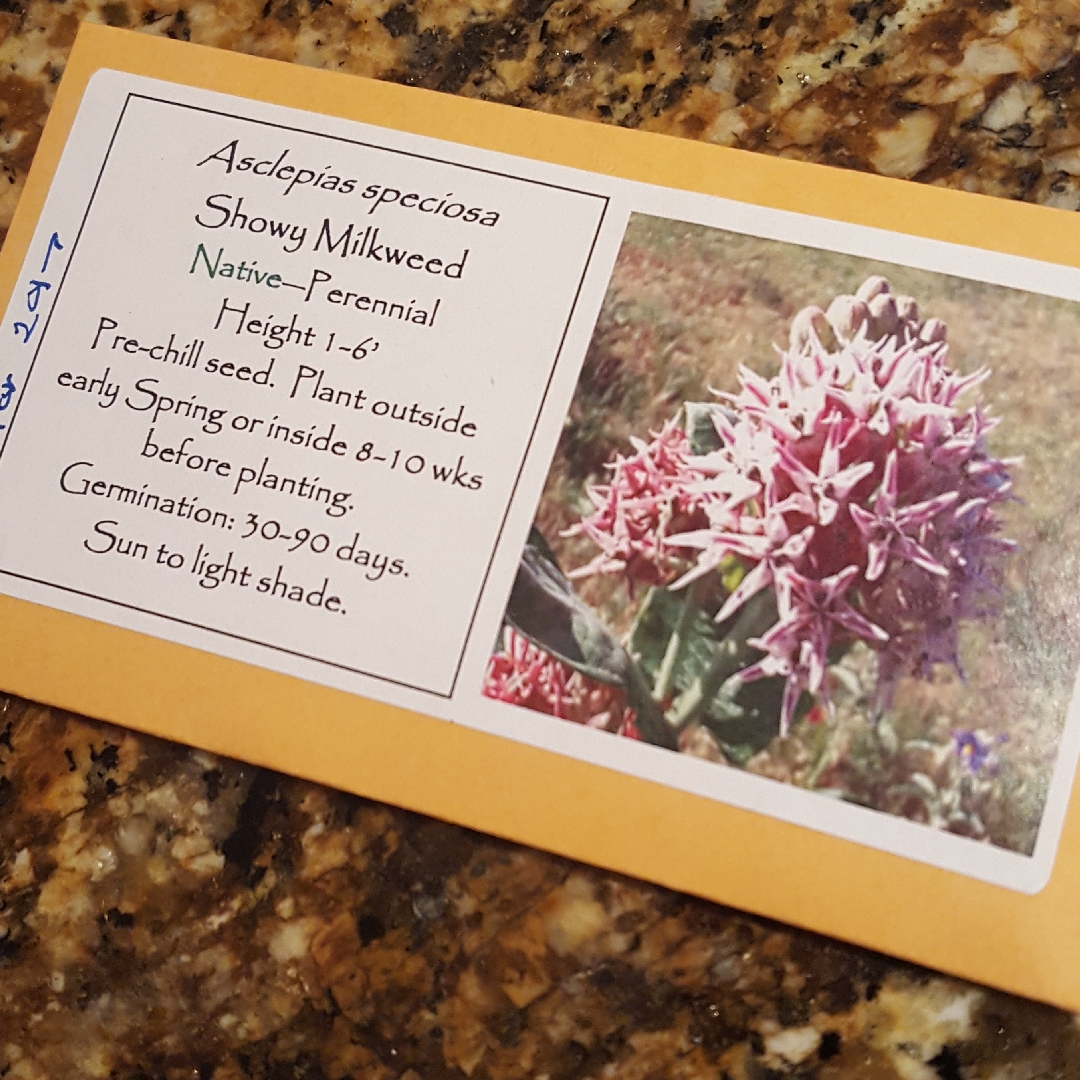
Asclepias speciosa
Showy Milkweed
Milkweed is so named after the milky sap that exudes from broken or cut stems, and which is a skin irritant, and toxic. It has simple leaves, and bears complex globe-shaped, fragrant flowers in Summer. Both the leaves and flowers are important as the food source for Monarch butterflies, and are also attractive to bees and other butterflies. Asclepias speciosa - Showy Milkweed - sport eye-catching, hirsute, pale pink through pinkish-purple flowers occur in dense umbellate cymes. Their corollas are reflexed and the central flower parts, five hoods with prominent hooks, form a star shape. The fruit is a large, rough follicle filled with many flat oval seeds, each with silky hairs.
Contributed by @jennlamaye
-
Full sun to partial shade
-
Occasional watering
-
Frost Hardy: 23F (-5°C)
-
Light and free draining
Common name
Showy Milkweed
Latin name
Asclepias speciosa
type
Perennial
family
Apocynaceae
ph
4.8 - 6.5 Acid - Neutral
Plant & bloom calendar
-
Best time to plant
-
When the plant will bloom
full grown dimensions
 1.00 M
1.00 M
1.00 M
1.00 M
Asclepias speciosa
Milkweed is so named after the milky sap that exudes from broken or cut stems, and which is a skin irritant, and toxic. It has simple leaves, and bears complex globe-shaped, fragrant flowers in Summer. Both the leaves and flowers are important as the food source for Monarch butterflies, and are also attractive to bees and other butterflies. Asclepias speciosa - Showy Milkweed - sport eye-catching, hirsute, pale pink through pinkish-purple flowers occur in dense umbellate cymes. Their corollas are reflexed and the central flower parts, five hoods with prominent hooks, form a star shape. The fruit is a large, rough follicle filled with many flat oval seeds, each with silky hairs.
Planting
From Early Spring TO Mid Spring
These plants have a long tap-root, and because if this they don't transplant easily. The best chance of a survival rate when transplanting is to do it in Spring. Generally speaking, though, it is better to sow in situ, to avoid the need to transplant. Sow in a sunny sheltered site.
Propagating by seed
From Early Spring TO Mid Spring
Sow in Spring in situ - in a sunny, sheltered site. The seeds can be sown in Autumn, but need a chilling period first (three weeks or so in the fridge would suffice)
Flowering
From Early Summer TO Late Summer
Milkweed - both the leaves and flowers -is the food source for monarch butterflies, and as such is an important plant for anyone interested in supporting the monarch butterfly population. The flowers appear in Summer








